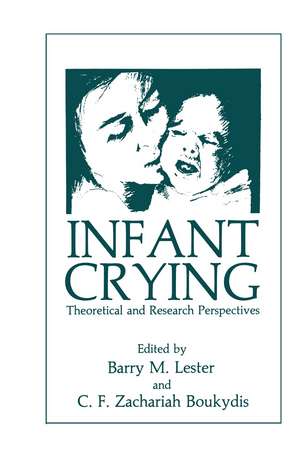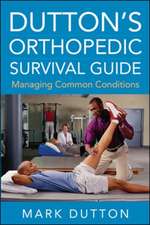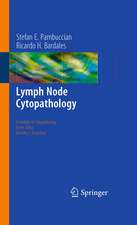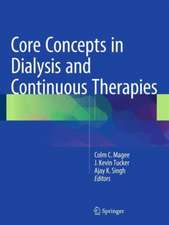Infant Crying: Theoretical and Research Perspectives
Editat de C.F.Z. Boukydis, B.M. Lesteren Limba Engleză Paperback – 26 sep 2011
Preț: 374.57 lei
Preț vechi: 394.29 lei
-5% Nou
Puncte Express: 562
Preț estimativ în valută:
71.67€ • 74.83$ • 59.32£
71.67€ • 74.83$ • 59.32£
Carte tipărită la comandă
Livrare economică 04-18 aprilie
Preluare comenzi: 021 569.72.76
Specificații
ISBN-13: 9781461294559
ISBN-10: 146129455X
Pagini: 404
Ilustrații: 400 p.
Dimensiuni: 155 x 235 x 21 mm
Greutate: 0.56 kg
Ediția:Softcover reprint of the original 1st ed. 1985
Editura: Springer Us
Colecția Springer
Locul publicării:New York, NY, United States
ISBN-10: 146129455X
Pagini: 404
Ilustrații: 400 p.
Dimensiuni: 155 x 235 x 21 mm
Greutate: 0.56 kg
Ediția:Softcover reprint of the original 1st ed. 1985
Editura: Springer Us
Colecția Springer
Locul publicării:New York, NY, United States
Public țintă
ResearchCuprins
1 Introduction: There’s More to Crying Than Meets the Ear.- 1. Introduction.- 2. Some Theoretical Speculations.- 2.1. Crying and States of Arousal.- 2.2. Crying and the Development of Inhibition.- 2.3. Crying and Endogenous Oscillators.- 2.4. Developmental Changes in Crying.- 2.5. Clinical Considerations.- 2.6. Parental Perceptions and Feelings.- 2.7. Crying and Soothability.- 3. References.- 2 The Physiology of Cry and Speech in Relation to Linguistic Behavior.- 1. Human Speech and Human Language.- 2. The Breath Group.- 3. Newborn Infants.- 4. The Development of Sentence Intonation.- 5. Learning to Control Intonation.- 6. Overriding the Vegetative Regulatory System.- 7. Speech Production and Respiratory Regulation.- 8. Imitating Intonation.- 9. Study of Linguistic “Base Forms”.- 10. The Range of Fundamental Frequency Variation.- 11. Duration as a Cue to Sentence Segmentation.- 12. Vowel Production.- 13. Concluding Comments.- 14. References.- 3 A Physioacoustic Model of the Infant Cry.- 1. Introduction.- 2. Definitions.- 3. Physioacoustic Model.- 3.1. Overview.- 3.2. Acoustical Component of the Model.- 3.3. Physiological Component of the Model.- 4. Cry Analysis Techniques.- 4.1. Auditory Analysis.- 4.2. Time Domain Analysis.- 4.3. Frequency Domain Analysis.- 4.4. Spectrographic Analysis.- 4.5. Computer-Based Signal Processing.- 5. Preliminary Studies.- 6. Conclusions.- 7. References.- 4 Twenty-Five Years of Scandinavian Cry Research.- 1. Scandinavian Cry Research.- 1.1 Cry Studies in Scandinavia.- 1.2. Auditory Identification of Cry Types.- 1.3. The Cry Analyzer.- 1.4. Physiological Cry Studies.- 1.5. Cry and Mother-Child Interaction.- 1.6. Baby Carriers Increase the Contact between Parents and Children.- 1.7. Singing—An Aid to Parental Attachment.- 2. SoundSpectrography.- 2.1. The Cry Characteristics.- 3. Cry in Newborn Infants.- 3.1. Cry in Healthy Full-Term Infants.- 3.2. Cry in Low-Birth-Weight Infants.- 4. Cry in Various Diseases.- 4.1. Cry in Clinical Diagnostics.- 4.2. Cry in Chromosomal Abnormalities.- 4.3. Cry in Infants with Endocrine Disturbances.- 4.4. Cry in Infants with Diseases and Malformations of the Orolaryngeal Tract.- 4.5. Cry in Infants with Metabolic Disturbances.- 4.6. Crying in Newborn Infants with Asphyxia.- 4.7. Crying in Diseases of the Central Nervous System.- 4.8. Cries in Malnutrition.- 4.9. Cry in Malformation Syndromes.- 4.10. Cry in Twin Pairs.- 5. Summary.- 6. References.- 5 Sound Spectrographic Cry Analysis of Pain Cry in Prematures.- 1. Introduction.- 2. Material and Methods.- 3. Results.- 4. Discussion.- 5. Summary.- 6. References.- 6 The Newborn Infant Cry: Its Potential Implications for Development and SIDS.- 1. The Cry and Health.- 2. The Cry and SIDS.- 3. Respiratory Instability, SIDS, and Behavioral Development.- 4. Purpose of this Study.- 5. Procedure.- 5.1. Infant Groups Studied.- 5.2. Method of Recording Cries.- 5.3. Analysis of Cries.- 5.4. Measures of Infant Development.- 6. Results.- 6.1. Intergroup Cry Comparisons.- 6.2. First-versus Fourth-Week Cry Comparisons.- 6.3. Derived Cry Variables.- 7. The Cry and Neonatal Instability.- 8. The Cry, Neonatal Behavior, and Mental and Psychomotor Development.- 9. The Cry, Respiratory Instability, and Development: Implications for Infants at Risk.- 10. References.- 7 The Communicative and Diagnostic Significance of Infant Sounds.- 1. Introduction.- 2. The Context of Infant Cry Behavior.- 3. The Patterning of Infant Cries.- 3.1. Genetic Anomalies.- 3.2. Growth Factors.- 3.3. Toxic Influences.- 4. Factors That Influence Cry Performance.-5. Technical and Methodological Considerations.- 6. The Communicative Function of Crying.- 7. Summary and Conclusion.- 8. References.- 8 A Developmental Perspective of Infant Crying.- 1. Introduction.- 2. Developmental Perspective.- 3. The Development of Crying.- 4. Crying and Present Behavioral Organization.- 5. Effects of Previous Development.- 6. Effects on Succeeding Points in Development.- 7. Conclusion.- 8. References.- 9 Perception of Infant Crying as an Interpersonal Event.- 1. Introduction.- 2. Review of Recent Cry Perception Research.- 2.1. Perception of Cries from Different Populations of Infants.- 2.2. Sound Features That Affect Perception.- 2.3. Adult Population Differences.- 2.4. Some Methodological Issues.- 3. Current Research on Adult Perception of Infant Crying.- 3.1. Perception of Crying: Results.- 3.2. Infant Temperament and the Transition to Parenthood: Results.- 4. Toward a Model of Interpersonal Perception of Infant Cry.- 5. Conclusion.- 6. References.- 10 Aversiveness Is in the Mind of the Beholder: Perception of Infant Crying by Adults.- 1. Introduction.- 2. Conceptual Models of the Cry’s Impact.- 2.1. The Cry as an Innate Releaser of Parental Behavior.- 2.2. The Cry as an Aversive Stimulus.- 2.3. The Cry as an Elicitor of Empathy and Altruism.- 2.4. Ontogenetic Considerations.- 3. Studies of the Cry’s Impact.- 3.1. Paradigms, Measures, and Subject Populations.- 3.2. Physiological Arousal to Cries.- 3.3. Annoyance Value of Cries.- 3.4. Sympathetic Responses to Cries.- 3.5. Experiential and Biological Influences on Responsiveness.- 4. Evaluation of the Conceptual Models.- 4.1. The Releaser Model Reconsidered.- 4.2. A Reexamination of the Aversive Stimulus or Egoistic Model.- 4.3. The Adequacy of the Empathy Model.- 4.4. The Ontogeny of HumanParental Behavior.- 5. New Directions for Cry Research.- 6. References.- 11 Physiology and Behavior: Parents’ Response to the Infant Cry.- 1. Introduction.- 2. The Cry as an Elicitor of Caregiver Response.- 3. Infant Development as a Function of Maternal Response.- 4. Stimulus Processing and Physiologic Response to Infant Signals.- 4.1. Receiver Variables.- 4.2. Infant/Stimulus Variables.- 5. Learned Helplessness —A Model of Maternal Response.- 6. Summary.- 7. References.- 12 When Empathy Fails: Aversive Infant Crying and Child Abuse.- 1. Introduction.- 2. The Contribution of Infant Characteristics to Child Abuse.- 3. The Role of Infant Crying in Child Abuse.- 4. Parental Physiological Responses to Infant Crying.- 5. Parental Responses to Premature Infants’ Crying.- 6. Responses of Mothers with Preterm Infants.- 7. Child Abusers’ Responses to Child-Related Stimuli.- 8. Summary and Conclusion.- 9. References.- 13 A Comparative Model of Infant Cry.- 1. Introduction.- 1.1. Relevance of Animal Models to Human Language.- 1.2. Rationale for the Cat Vocalization Model.- 2. Problems of Quantification.- 3. Characteristics of Cat Vocalization.- 3.1. Cat Vocal Repertoire.- 3.2. The Kitten Isolation Cry.- 4. Vocal Learning in the Kitten.- 5. Voluntary Control of Vocalizations in the Cat.- 6. Substrates of Cat Vocal Behavior.- 6.1. Vocal Tract Properties.- 6.2. Neurophysiological Mechanisms.- 7. Similarities between Infant and Kitten Vocal Behavior.- 8. Conclusions.- 9. References.- 14 The Infant Cry of Primates: An Evolutionary Perspective.- 1. Introduction.- 2. Crying in Human Infants.- 2.1. Basic Cry Patterns.- 2.2. Pain Cry.- 3. Vocal Repertoire of Human Infants.- 4. Vocal Behavior of Infant Primates: An Overview.- 5. The Isolation Call of Primates.- 5.1. Prosimians.-5.2. New World Primates.- 5.3. Old World Monkeys.- 5.4. Great Apes.- 5.5. Primate Isolation Call Structure: Summary.- 6. Inheritance of Isolation Call Characteristics.- 7. Ontogeny of Isolation Calls.- 8. Neural Substrates of Isolation Calls.- 9. Conclusions.- 10. References.- 15 Application of Cry Research to Clinical Perspectives.- 1. Introduction.- 2. Diagnostic Use.- 3. Parental Role.- 4. Normative Cry Study.- 5. Crying as Part of Normal Development.- 6. Constellation of Neonatal Behavior.- 7. Intervention and Anticipatory Guidance.- 8. A Clinical Example.- 9. Conclusions.- 10. References.- 16 Crying: A Clinical Overview.- 1. Introduction.- 2. Crying in the Preschool Child.- 3. Crying at School.- 4. The Diagnostic Value of the Cry—Crying under the Age of Two.- 5. The Toddler-Aged Child.- 6. Crying in the School-Aged Child.- 7. Handicapped Children.- 8. Crying—Its Social Role.- 9. Bibliography.- 17 Epilogue.- 1. References.











